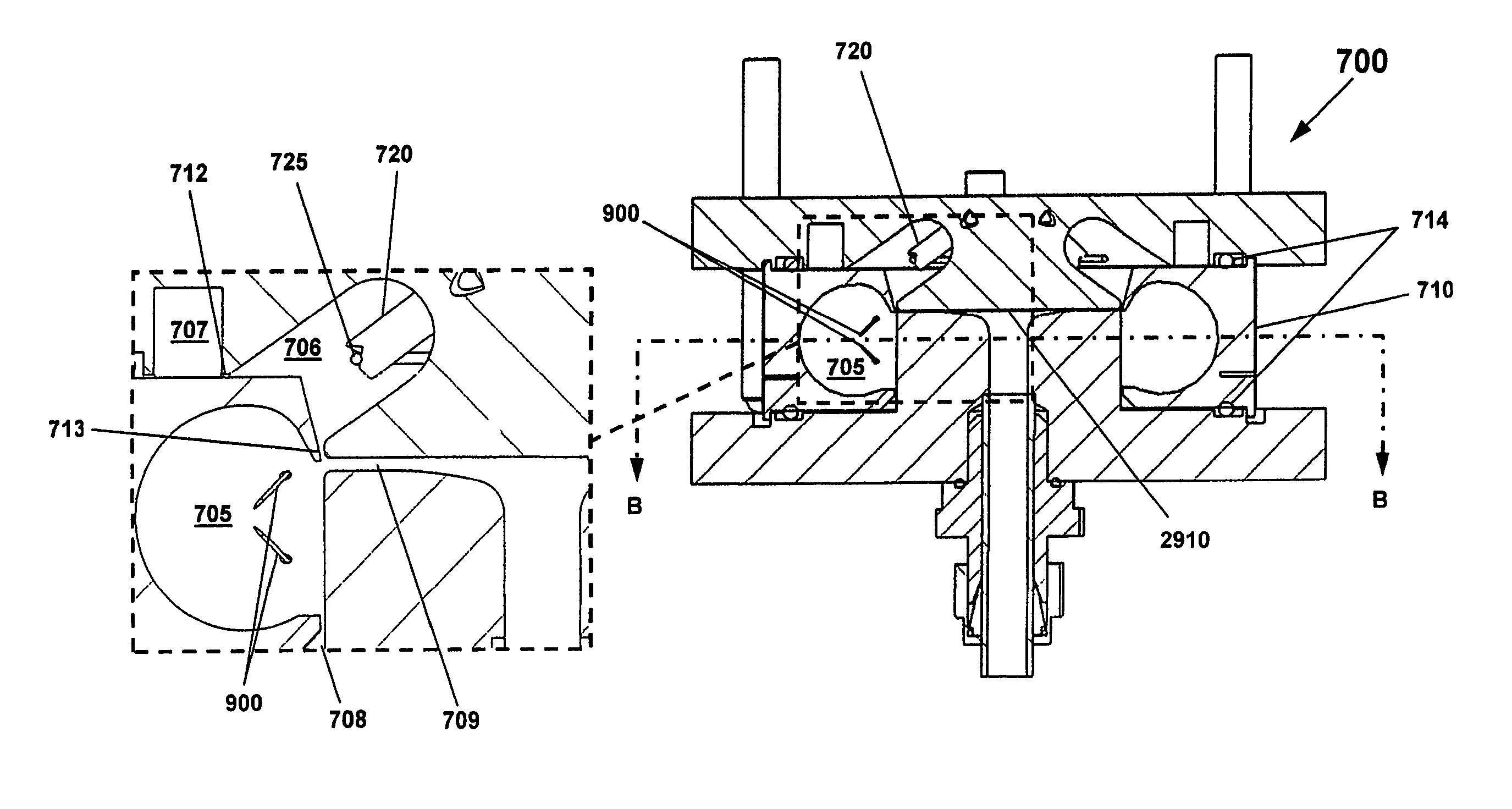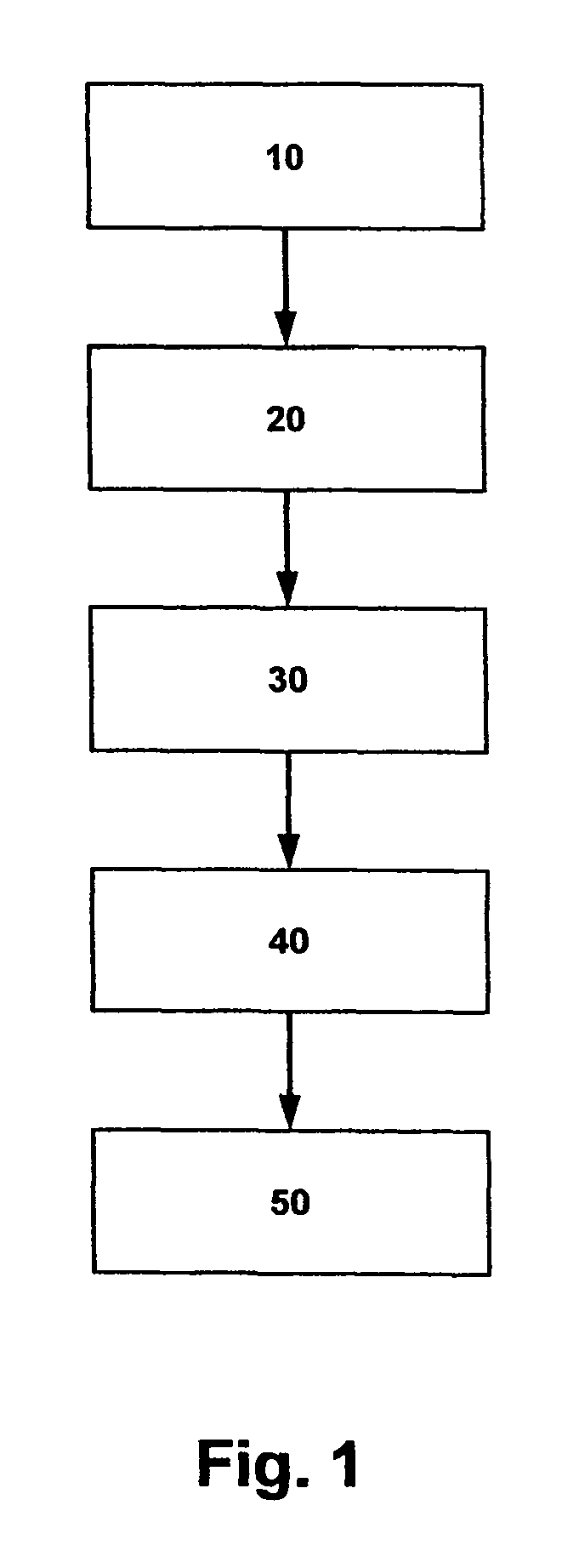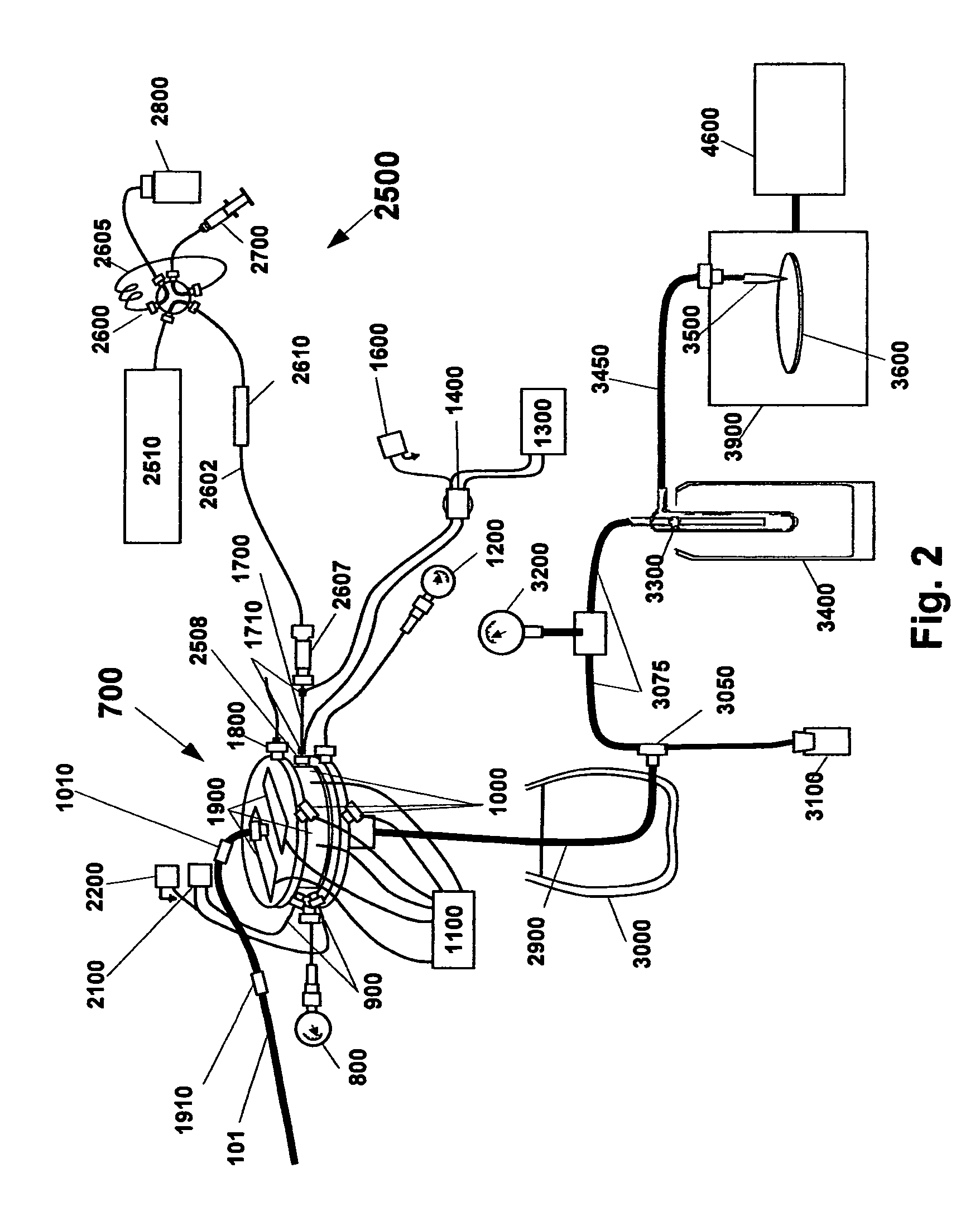Method and apparatus for desolvating flowing liquid
a technology of flowing liquid and apparatus, applied in the direction of centrifugal force sediment separation, water/sewage treatment by ion exchange, particle separator tubes, etc., can solve the problems of thermal degradation or volatile-solute evaporation conditions, and achieve the effects of reducing the amount of remaining solvent vapor, limiting the validity or scope of claims, and small siz
- Summary
- Abstract
- Description
- Claims
- Application Information
AI Technical Summary
Benefits of technology
Problems solved by technology
Method used
Image
Examples
Embodiment Construction
[0155]The present invention discloses methods and apparatus as schematically illustrated in FIG. 2, which illustrates a simplified version of an apparatus according to this invention for desolvating flowing liquid streams while retaining temporal separation of dissolved solutes. LC techniques are generally well known in this art. As shown in FIG. 2, an isocratic or gradient Liquid Chromatography (LC) system 2500 is provided consisting of LC pump 2510, injector 2600 with associated sample loop 2605, sample loading syringe 2700 and waste bottle 2800. The LC system delivers the combined sample and solvent stream into chromatography column 2610. The LC eluent flows through capillary 2602 connected by compression fitting union 2607 to electrically heated thermal nebulizer 1700. The nebulizer 1700 is connected to cyclone 700 by compression fitting 2508. Sample travels from the cyclone 700 through the first-stage condenser tube 2900 to tee 3050 where condensed solvent drains into waste bot...
PUM
| Property | Measurement | Unit |
|---|---|---|
| temperature | aaaaa | aaaaa |
| boiling point | aaaaa | aaaaa |
| diameter | aaaaa | aaaaa |
Abstract
Description
Claims
Application Information
 Login to View More
Login to View More - R&D
- Intellectual Property
- Life Sciences
- Materials
- Tech Scout
- Unparalleled Data Quality
- Higher Quality Content
- 60% Fewer Hallucinations
Browse by: Latest US Patents, China's latest patents, Technical Efficacy Thesaurus, Application Domain, Technology Topic, Popular Technical Reports.
© 2025 PatSnap. All rights reserved.Legal|Privacy policy|Modern Slavery Act Transparency Statement|Sitemap|About US| Contact US: help@patsnap.com



